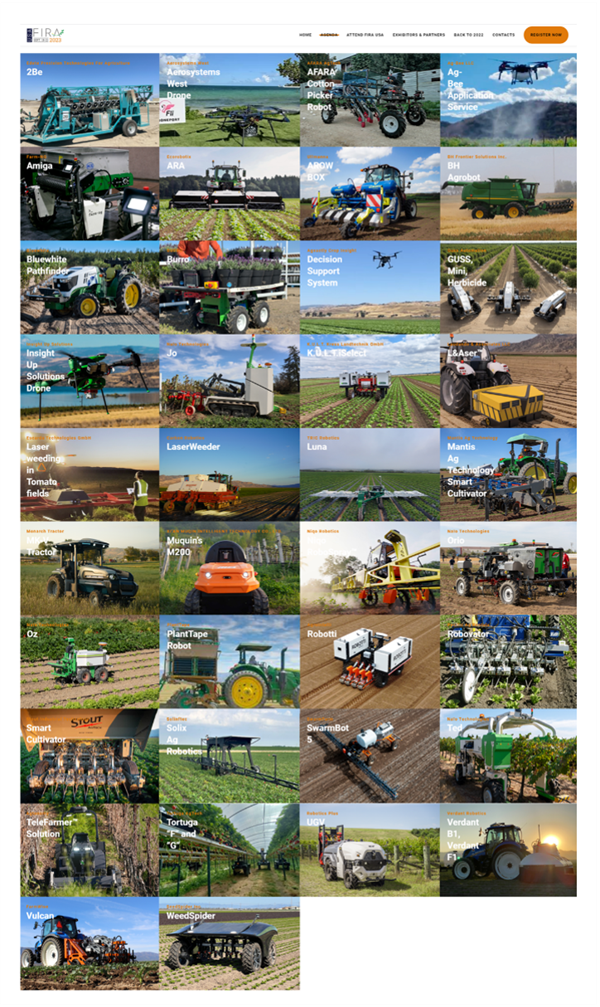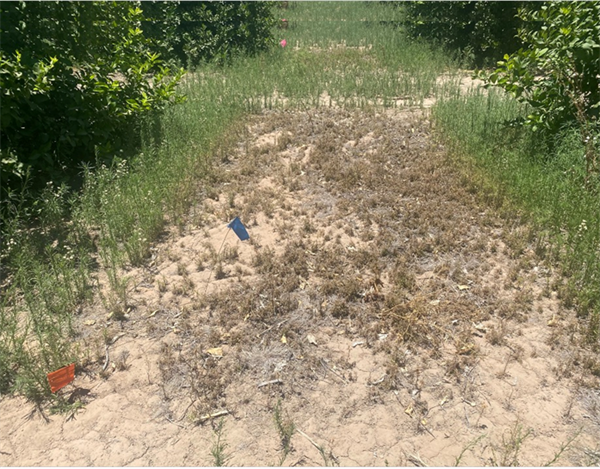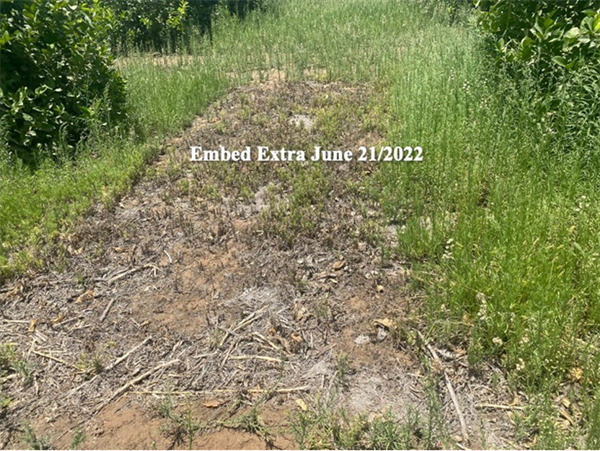
The drought-related pressures on the Colorado River system that have been impacting the entire basin and region for 23 years have slackened briefly due to the wet winter in 2023 that included a good snowpack in the mountains, better rainfall throughout the basin, and improved flows into the river. The current water level at Lake Mead on Hoover Dam is 1,068.25 ft. above sea level on 3 January 2024. That level is 160.75 ft below full pool of 1,229.00 ft. (Figure 1).
In mid-December 2023 representatives from each of the seven Colorado River Basin states met in Las Vegas, NV during the annual Colorado River Water Users Association conference. The focus of current discussions among the basin states is to negotiate a new compromise for the guidelines of use under conditions of water shortage. These new guidelines will go into place at the end of 2026. The immediate goal is to draft proposals by March 2024.
The negotiations are incentivized by having the opportunity for the post-2026 guidelines being developed by the basin states themselves as opposed to litigation or legislation. A major concern driving this process among the basin states that basin state representatives should be able to do this better than turning the process over to people and entities that have less direct familiarity with the situation and no real “skin” in the game.
The 1963 decision by the Supreme Court of the United States in of the Arizona v California case directed the federal authority on the management of the Colorado River to the Department of the Interior and the Bureau of Reclamation (BoR). However, the basin states have the chance to negotiate their future management plans on the Colorado River. If they fail to do so in the allotted time, the process will be managed by the federal government.
The basic water budget challenge is based on the following basic statistics:
Some notable progress is being made for conservation of Colorado River water with agreements among lower basin states and tribes that will conserve more than 1.5maf/year through 2026. For example, California water agencies have recently agreed to conserve up to 643,000 acre-feet/year through 2025. The Quechan Indian Tribe has reached an agreement with federal water managers to save up to 39,000 acre-feet/year through 2025. Arizona has agreed to conserve up to 348.00 acre-feet/year through 2026. All these temporary agreements are being supported with federal funding.
With agriculture responsible for 70% of the diversions on the Colorado River, these negotiations are extremely important for the future of agriculture in this region and our capacity to support high population densities that are now common and rapidly growing.
These types of negotiations are certainly challenging in dealing with a limited water supply and a lot of demand. There are many competing interests involved. Yet, we are confident that the representatives we have will be able to work this out and come to a set of functional agreements.
Hi, I’m Chris, and I’m thrilled to be stepping into the role of extension associate for plant pathology through The University of Arizona Cooperative Extension in Yuma County. I recently earned my Ph.D. in plant pathology from Purdue University in Indiana where my research focused on soybean seedling disease caused by Fusarium and Pythium. There, I discovered and characterized some of the first genetic resources available for improving innate host resistance and genetic control to two major pathogens causing this disease in soybean across the Midwest.
I was originally born and raised in Phoenix, so coming back to Arizona and getting the chance to apply my education while helping the community I was shaped by is a dream come true. I have a passion for plant disease research, especially when it comes to exploring how plant-pathogen interactions and genetics can be used to develop practical, empirically based disease control strategies. Let’s face it, fungicide resistance continues to emerge, yesterday’s resistant varieties grow more vulnerable every season, and the battle against plant pathogens in our fields is ongoing. But I firmly believe that when the enemy evolves, so can we.
To that end I am proud to be establishing my research program in Yuma where I will remain dedicated to improving the agricultural community’s disease management options and tackling crop health challenges. I am based out of the Yuma Agricultural Center and will continue to run the plant health diagnostic clinic located there.
Please drop off or send disease samples for diagnosis to:
Yuma Plant Health Clinic
6425 W 8th Street
Yuma, AZ 85364
If you are shipping samples, please remember to include the USDA APHIS permit for moving plant samples.
You can contact me at:
Email: cdetranaltes@arizona.edu
Cell: 602-689-7328
Office: 928-782-5879
Interested in staying up to date on the latest robotic ag technologies? FIRA USA and a number of other entities are organizing a 3-day forum focused on autonomous farming and agricultural robotics solutions. The event will be held September 18-21 in Salinas, CA. The program includes top-level keynote speakers, breakout sessions, a trade show and field demos. Over 35 robots will be demoed and/or on display including 12 machines designed for weeding vegetable crops. Some of the latest technologies for in-row weeding will be featured including lasers (3 companies), high voltage electricity and high precision spot spraying (3 companies). If you are interested in ag tech, FIRA 2023 promises to be a quality event and one well worth attending. For more information, visit https://fira-usa.com/.

Fig. 1. Robotic technologies on display and being demoed in
the field at FIRA USA 2023. Event will be held September 19-21st in
Salinas, CA. (Photo credits: FIRA USA).
Surveying the Yuma area, we have observed a lot of Hairy Fleabane (Conyza bonariensis) and received calls from PCA's regarding this weed and its control.
We have observed that the application of Glyphosate is not showing good efficacy in controlling this species in parts of Yuma and Phoenix area.
Resistance to glyphosate has been reported in some grain growing areas of Queensland and northern New South Wales and other cropping regions across Australia (1) as well as Spain (2).
Other cases of resistance to other herbicides such as paraquat, and 2,4-D have been confirmed (3).
In the International Herbicide Resistance Weed Database it is reported that in Switzerland that both Conyza canadiensis (Horseweed) and Conyza bonariensis (Hairy Fleabane) presented resistance to a HRAC Group 9 herbicide last year. We found resistance reported in California only and not in Arizona (4).
Some of our PCA amigos and field technicians have reported having problems finding a good treatment for fleabane due to possible glyphosate resistance. We included Glufosinate and Embed Extra in a trial last year. The images below show good results of an application of Rely at a high rate (82floz) with two applications at a 2-week interval. The second picture shows the efficacy of Embed Extra (2 pt.) following the same application schedule. Weeds were ~2-3” at the time of application. Some growers have reported good results with glufosinate in Waddell AZ. Sharpen has also been used by Yuma citrus growers.
A study showed that plants grown at 90% relative humidity presented more translocation of glufosinate than those grown at 35%. Relative humidity had greater effect than temperature on glufosinate toxicity to Palmer amaranth, redroot pigweed, and common waterhemp (5). In a trial conducted by Barry Tickes from UA nutsedge control was better in an August application with a ~40% RH than a June application with ~20% RH.
As always please check labels and registration before using these treatments.

Figure 1. Hairy fleabane control with Glufosinate

Figure 2. Hairy Fleabane control with Embed Extra
References:
1. https://bnrc.springeropen.com/articles/10.1186/s42269-020-00316-w
2. https://cdnsciencepub.com/doi/10.1139/cjps-2018-0254
3. https://bioone.org/journals/weed-technology/volume-35/issue-4/wet.2021.11/Cross-resistance-to-diquat-in-glyphosate-paraquat-resistant-hairy-fleabane/10.1017/wet.2021.11.short
4. https://www.weedscience.org/Pages/Species.aspx
5. Coetzer, E., Al-Khatib, K., & Loughin, T. (2001). Glufosinate efficacy, absorption, and translocation in amaranth as affected by relative humidity and temperature. Weed Science, 49(1), 8-13. doi:10.1614/0043-1745(2001)049[0008:GEAATI]2.0.CO;2
This time of year, John would often highlight Lepidopteran pests in the field and remind us of the importance of rotating insecticide modes of action. With worm pressure present in local crops, it’s a good time to revisit resistance management practices and ensure we’re protecting the effectiveness of these tools for seasons to come. For detailed guidelines, see Insecticide Resistance Management for Beet Armyworm, Cabbage Looper, and Diamondback Moth in Desert Produce Crops .
VegIPM Update Vol. 16, Num. 20
Oct. 1, 2025
Results of pheromone and sticky trap catches below!!
Corn earworm: CEW moth counts declined across all traps from last collection; average for this time of year.
Beet armyworm: BAW moth increased over the last two weeks; below average for this early produce season.
Cabbage looper: Cabbage looper counts increased in the last two collections; below average for mid-late September.
Diamondback moth: a few DBM moths were caught in the traps; consistent with previous years.
Whitefly: Adult movement decreased in most locations over the last two weeks, about average for this time of year.
Thrips: Thrips adult activity increased over the last two collections, typical for late September.
Aphids: Aphid movement absent so far; anticipate activity to pick up when winds begin blowing from N-NW.
Leafminers: Adult activity increased over the last two weeks, about average for this time of year.







